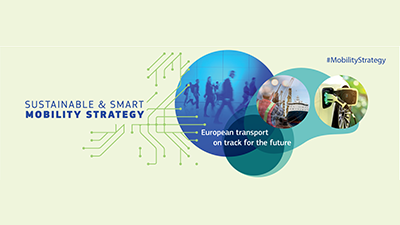With transport contributing around 5% to EU GDP and employing more than 10 million people in Europe, the transport system is critical to European businesses and global supply chains.
 At the same time, transport is not without costs to our society:
At the same time, transport is not without costs to our society:
- greenhouse gas and pollutant emissions
- noise
- road crashes and congestion
Today, transport emissions represent around one quarter of the EU’s total Green House Gas emissions.
The European Commission has put together a comprehensive strategy for mobility, identifying milestones for a smart and sustainable future and 10 key areas for action to make the vision a reality.
This push to transform transport comes at a time when the entire sector is still reeling from the impacts of the coronavirus. With increased public and private investment in the modernisation and greening of our fleets and infrastructure, and by reinforcing the single market, we now have a historic opportunity to make European transport not only more sustainable but more competitive globally and more resistant to any future shocks.
Green evolution: nobody left behind
However, this evolution should leave nobody behind:
- it is crucial that mobility is available and affordable for all
- that rural and remote regions remain connected
- that the sector offers good social conditions and provides attractive jobs
All transport modes need to become more sustainable, with green alternatives widely available and the right incentives put in place to drive the transition. Concrete milestones will keep the European transport system’s progress toward a smart and sustainable future on track.
European Commission's Mobility Strategy
Have a look at the information package published by the European Commission:
